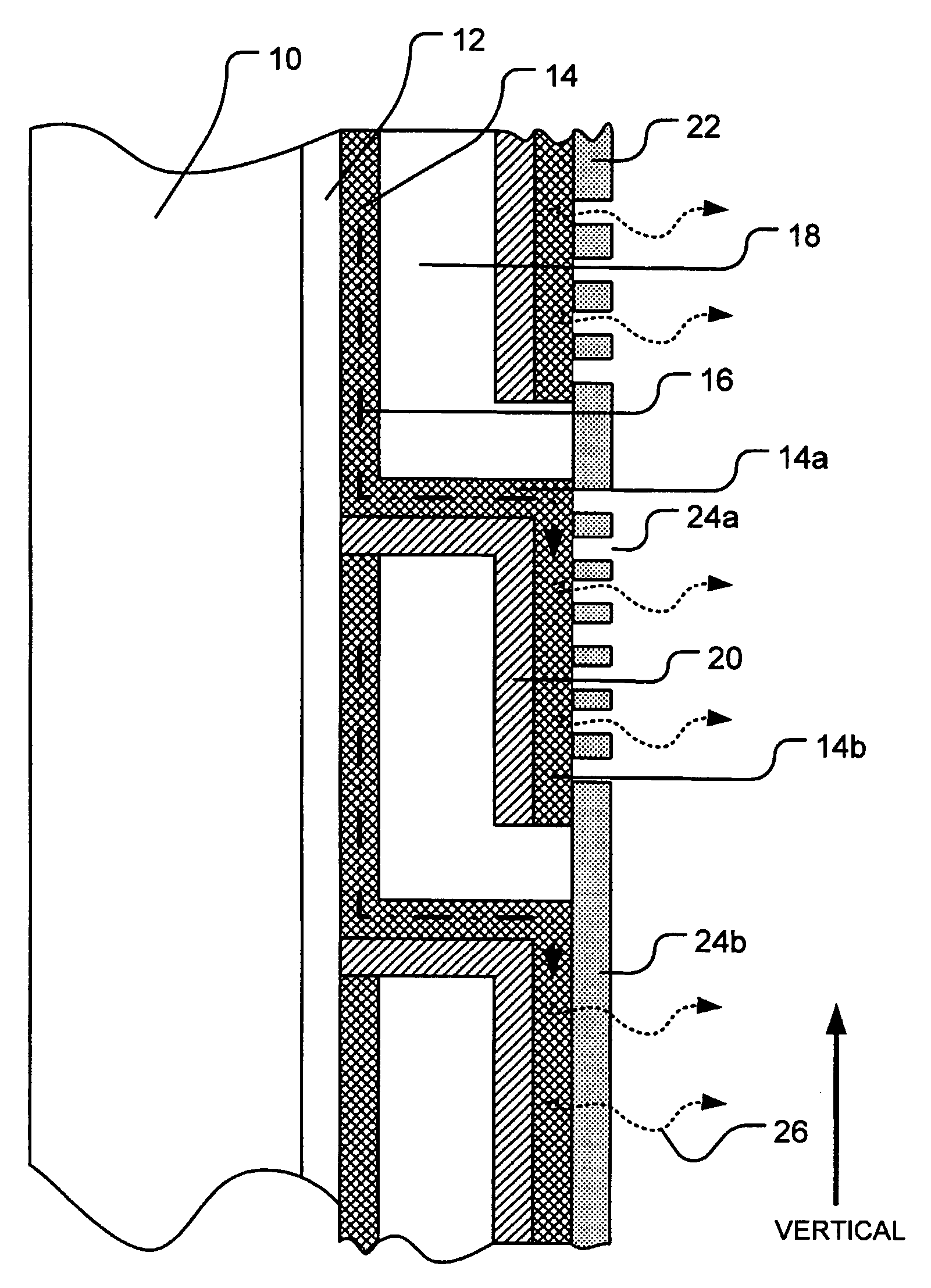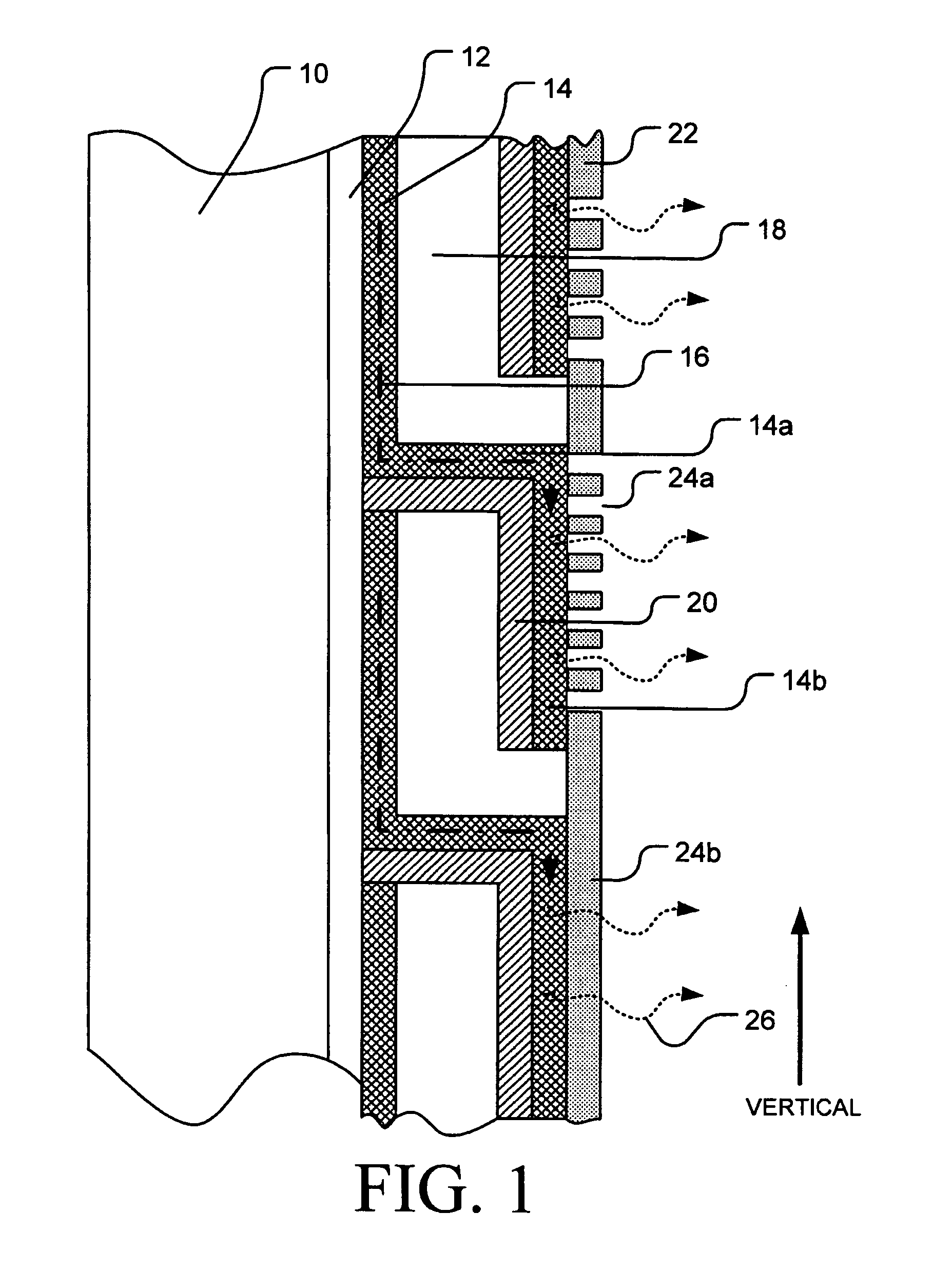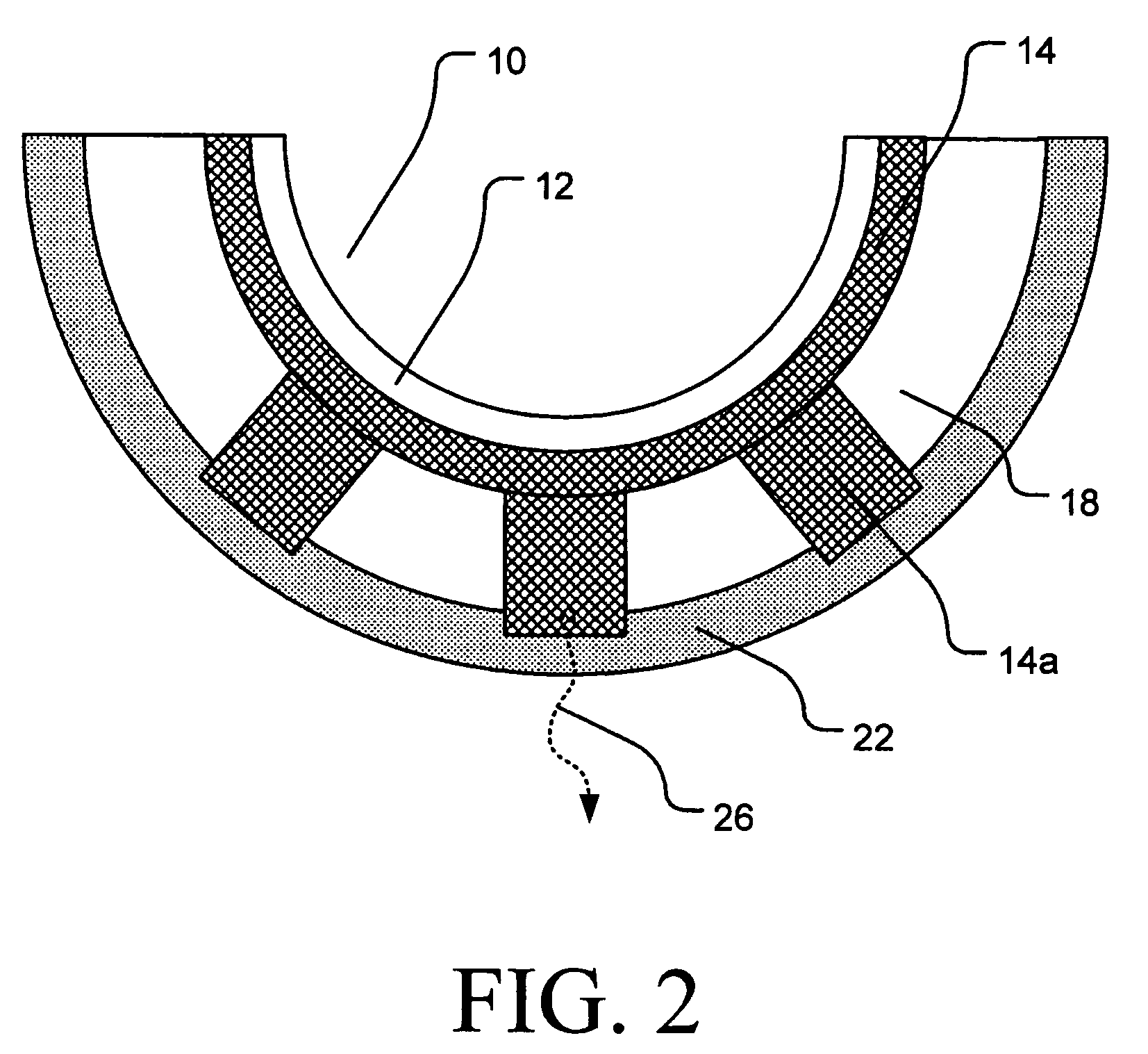Insulation system with condensate wicking for vertical applications
a technology of condensate wicking and vertical installation, which is applied in the direction of defrosting, heating types, domestic cooling apparatus, etc., can solve the problems of water vapor migration and condensation, reducing the insulation efficiency, and excessive accumulation in the lower portion of vertical installation and/or adjoining horizontal portions of installation, so as to improve the insulation performance and reduce damage and deterioration
- Summary
- Abstract
- Description
- Claims
- Application Information
AI Technical Summary
Benefits of technology
Problems solved by technology
Method used
Image
Examples
Embodiment Construction
[0021]As shown in FIG. 1, an elongated, vertically-oriented duct, pipe or other structure 10 having a cool surface 12 is wrapped in or covered with a laminated insulation product that includes a wicking material layer 14, a primary insulating layer 18 and a liquid barrier layer 20. When air containing water vapor (not shown) reaches the cooled surface 12 and the cooled surface is at a temperature at or below the dewpoint of the adjacent air, a portion of the water vapor will condense to form a condensate 16 consisting primarily of water. Due to the effect of gravity and the hydrophilic properties of the wicking layer 14, the condensate 16 will tend to flow downwardly through the wicking layer. Periodically, this flow will be interrupted by a liquid barrier layer 20 that will prevent the condensate from flowing into the adjacent insulating layer 18 and, in combination with a horizontal extension 14a of the wicking material layer 14, will bring the condensate near the surface of the l...
PUM
 Login to View More
Login to View More Abstract
Description
Claims
Application Information
 Login to View More
Login to View More - R&D
- Intellectual Property
- Life Sciences
- Materials
- Tech Scout
- Unparalleled Data Quality
- Higher Quality Content
- 60% Fewer Hallucinations
Browse by: Latest US Patents, China's latest patents, Technical Efficacy Thesaurus, Application Domain, Technology Topic, Popular Technical Reports.
© 2025 PatSnap. All rights reserved.Legal|Privacy policy|Modern Slavery Act Transparency Statement|Sitemap|About US| Contact US: help@patsnap.com



